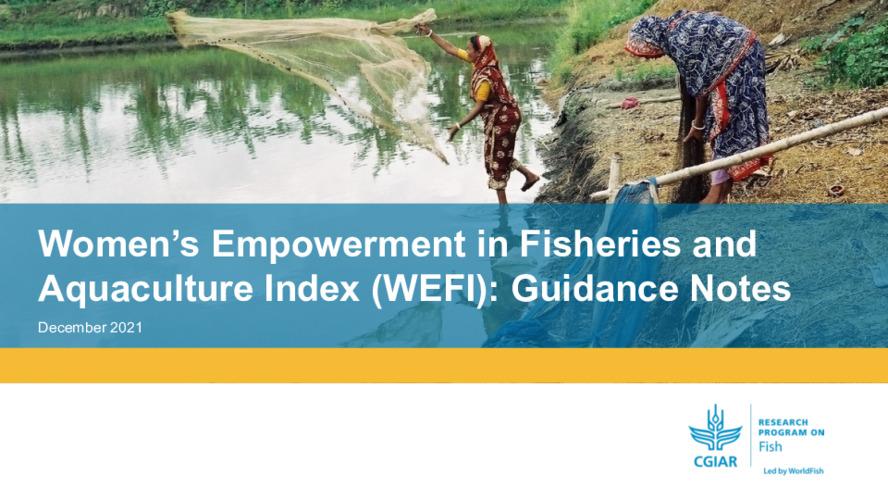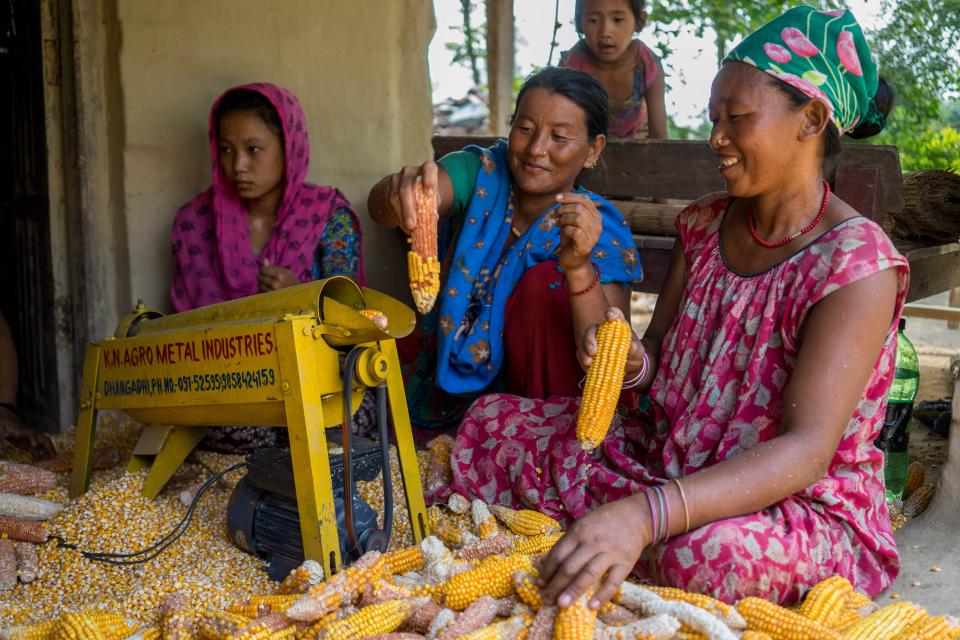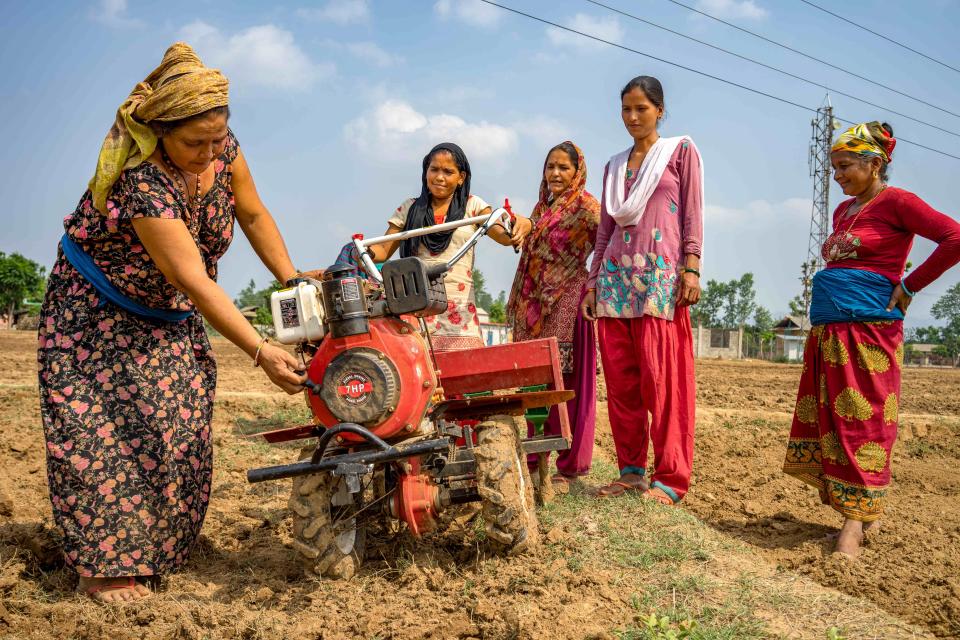Qualitative tools for the women’s empowerment in fisheries and aquaculture index (WEFI)
 Photo: WorldFish
Photo: WorldFish
A method for measuring the empowerment, agency and inclusion of women in fisheries and aquaculture contexts in an effort to identify ways to overcome obstacles and constraints.
Why is the method important?
The method describes a set of tools that can be used for qualitative research on women’s empowerment in fisheries and aquaculture and which complement the quantitative tools for the calculation of the Women’s Empowerment in Fisheries and aquaculture Index (WEFI).
Who is the method for?
It is relevant to policymakers, researchers, implementing organizations and academics working toward women’s empowerment in aquaculture.
How can I use this method?
This method has a quantitative component (the index), and a qualitative component. It is used for performance monitoring, decision making, research, implementation and education purposes to measure and increase women’s empowerment in a fisheries and aquaculture context. It is also used to track Reach-Benefit-Empower-Transform (RBET) outcomes for women in fisheries and aquaculture projects.
How was it developed?
WorldFish developed the method in partnership with KIT Royal Tropical Institute. The WEFI is based on the Women’s Empowerment in Agriculture Index (WEAI). The qualitative tools have been derived from different sets of other tools (such as qualitative tools of the pro-WEAI, developed in the second phase of the Gender, Agriculture, and Assets Project) used across the CGIAR and with KIT partners, but have not yet been tested as a whole.
Some versions of the WEFI have been used previously in Zambia and Bangladesh. The WEFI has been tailored to aquaculture and fisheries contexts in addition to capturing information on agriculture.
The quantitative survey instrument was cognitively tested with 52 adult women and men respondents in 3 subdivisions in West Bengal, India. The results were used to assess respondent comprehension, retrieval, judgement and response. This informed which versions of certain modules and/or questions to use as well as how to phrase questions better for respondents to understand.
Where can I get the method?
Access the method in the below parts:
Publications

Qualitative tools for the Women’s Empowerment in Fisheries and Aquaculture Index (WEFI)

Women's empowerment in fisheries and aquaculture index (WEFI): Guidance notes
McDougall C, Kruijssen F, Sproule K, Serfilippi E, Rajaratnam S, Newton J and Adam R. 2021. Women’s Empowerment in Fisheries and Aquaculture Index (WEFI): Guidance Notes. Penang, Malaysia: CGIAR Research Program on Fish Agri-Food Systems (FISH)
Women's empowerment in fisheries and aquaculture index (WEFI): Guidance notes (video)
Kruijssen, F., Sproule, K., 2022. Women’s empowerment in fisheries and aquaculture index (WEFI): Guidance notes (video). Penang, Malaysia: CGIAR Research Program on Fish Agri-Food Systems (FISH)
WEFI tool package
McDougall, Cynthia; Kruijssen, Froukje; Sproule, Katie; Serfilippi, Elena; Rajaratnam, Surendran; Newton, Julie; Adam, Rahma, 2022, "WEFI Tool Package", https://doi.org/10.7910/DVN/PIKS4I, Harvard Dataverse, V1


